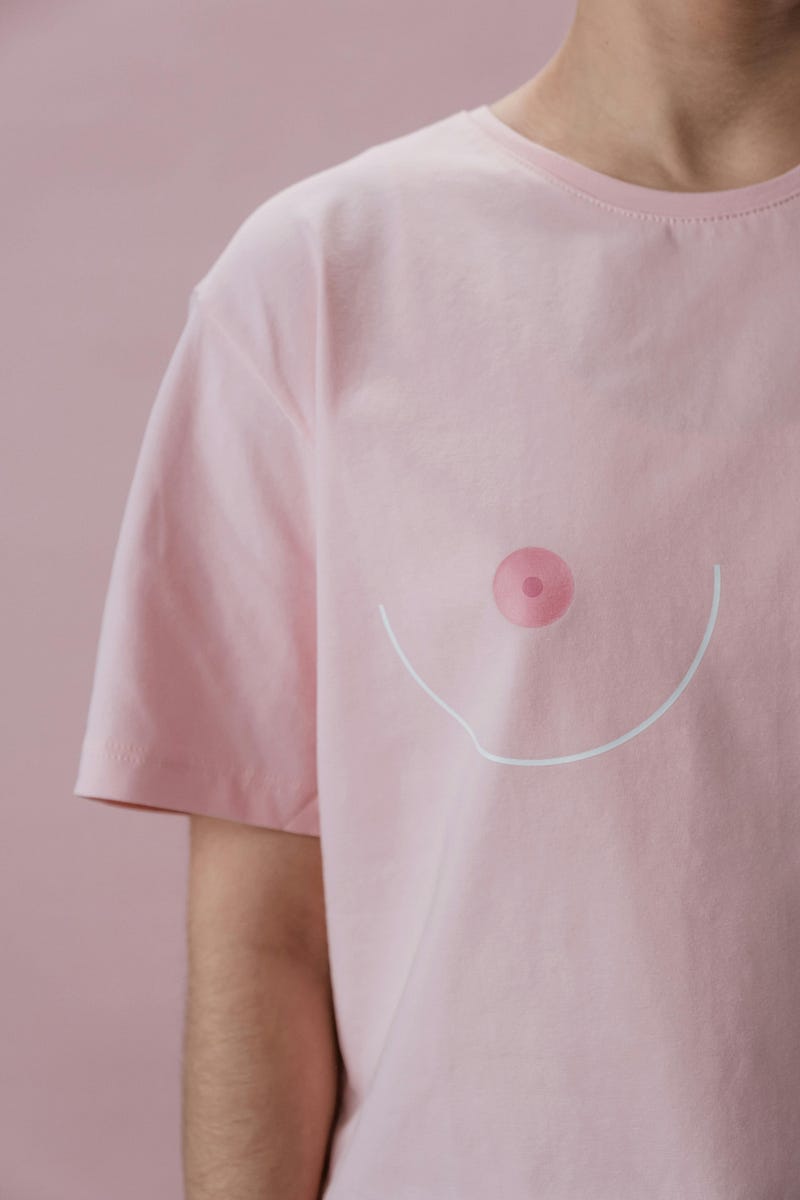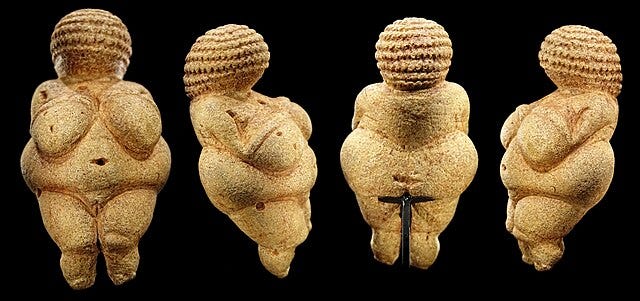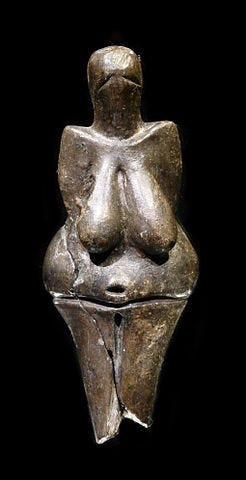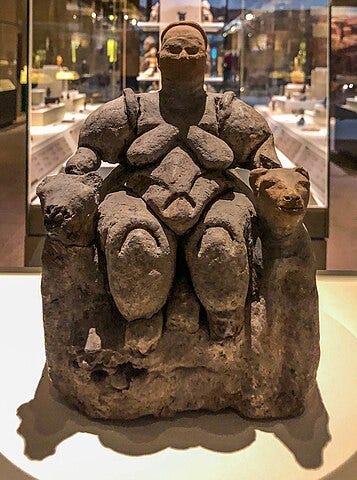The Complexities of #FreeTheNipple: Beyond Feminist Ideals
Written on
Chapter 1: Introduction to #FreeTheNipple
The #FreeTheNipple campaign asserts that until men can develop breasts, the desexualization of women's breasts remains an unachievable goal.

Photo by cottonbro studio
Personally, I choose not to wear bras. One of the advantages of being part of the small-breasted community is the ability to skip those uncomfortable metal contraptions that designers seem to have conjured from medieval times. (Seriously, why can’t someone create a bra that doesn’t resemble materials used in elevator shafts?)
However, summer’s sheer fabrics and cooler evenings compel me to use self-adhesive “boob tape,” wrapping myself up to the point of resembling a barricade.
Before heading out, I pose a crucial question to my teenage daughter: “Can you see my nipples?”
Her laughter rings out as she playfully responds, “#FreeTheNipple, Mom!!!”
It’s an ongoing joke between us, recognizing the absurdity of seeking feminist freedom by simply exposing our breasts.
Prepare yourself for a controversial take…
The #FreeTheNipple movement may be one of the most pointless feminist endeavors in recent history.
For those unfamiliar, this movement originated in 1992 when Ramona Santorelli from New York filed a lawsuit, arguing that toplessness was discriminatory against women. Her claim aligns with contemporary feminist arguments—if men can bare their chests, why can’t women?
Santorelli won, legalizing toplessness in New York. (Feel free to use that info during your next outing in Central Park.)
Since then, #FreeTheNipple has emerged as a rallying cry for women advocating for the right to go topless. In a New York Times op-ed video, a topless woman boldly states, “All of them [men] probably at one point sucked on them, so I don’t know why they should be such a big deal.”
Let’s delve into why breasts remain a “big deal.”
Firstly, men aren’t typically flashing their nipples at work functions. Most respectable venues require men to wear shirts. Thus, the argument that men can freely expose their chests lacks substantial grounding.
Secondly, equating men’s ability to show their nipples with women’s rights to do the same reflects a simplistic perspective that deserves a thorough rebuttal. The concept of sexual dimorphism provides a more nuanced understanding. This evolutionary trait describes the physical and behavioral differences between male and female species. Males often have more muscular physiques, while females develop breasts.
At this point, half of you might be thinking, “I appreciate sexual dimorphism (and breasts),” while the other half may be ready to argue. For those eager to debate, consider this:
Without sexual dimorphism, our world would lack diversity. Imagine a universe where mallard ducks all appeared dull gray, or where baboons didn’t have their distinctive red behinds. (Note: Only male mallards display vibrant colors, and only female baboons exhibit swollen rumps.)
In essence, sexual dimorphism spices up the dating scene. Picture trying to find a partner at a monochrome masquerade; it would be rather dull.
Nevertheless, some feminists argue that invoking sexual dimorphism serves to perpetuate gender roles. They believe that emphasizing these differences is often exaggerated and influenced by cultural norms.
However, the sexualization of breasts isn’t merely a construct of a tyrannical patriarchy. Breasts are viewed through a sexual lens primarily because most biological males do not possess them. This is simply how heterosexual attraction operates—we admire what we do not have. Until male breasts become desirable, female breasts will remain sexualized.
Still skeptical? Let’s consult the anthropological record. Before the advent of modern societal norms, ancient figurines depict a common theme—large, naked breasts.
The Venus of Willendorf, for instance, is a notable example, unabashedly showcasing her curves.

The Venus of Dolní V?stonice features less exaggerated breasts, but she was considered a figure of beauty in her time. Some anthropologists posit that humans favored larger breasts for easier infant latching. (These experts have clearly never breastfed a hungry baby who would latch onto anything offering nourishment.)

Lastly, the Seated Woman of Çatalhöyük exhibits breasts that seem to defy any form of restraint.

Most anthropologists believe these figures were symbols of fertility, as breasts naturally enlarge during pregnancy and lactation. Few male fertility figures exist, which may indicate a historical reverence for the female form.
Interestingly, research on Upper Paleolithic figurines reveals that larger breasts were more common in colder climates. This suggests that, in times of scarcity, obesity became an ideal. In periods of nutritional stress, those with more body fat prevailed.
Humans are the only primates with permanently enlarged breasts. Most other animals only exhibit such traits while lactating. One theory proposes that as Homo ergaster’s diet shifted to include more meat, their brains required additional fat. Thus, breasts (and buttocks) became optimal fat storage.
Another theory suggests that women developed persistent breast size to attract male attention. In early human societies, men may have been unsure if a woman’s lactating breasts belonged to their offspring or another man’s. Therefore, men had an evolutionary incentive to protect women, leading to increased attention towards them.
However, not all cultures sexualize breasts. For instance, the Himba of Namibia, the Zulu of South Africa, and many European societies view breasts primarily as functional. Breasts are for milk production; any other interpretation is seen as superfluous.
In contrast, American culture struggles to dissociate breasts from sexual connotations. Thus, public breastfeeding often sparks outrage, which is unwarranted. Mothers should feel free to nourish their children without stigma.
Nevertheless, some feminists argue that women should be free to display their breasts without facing objectification. Their stance is that breasts are simply body parts—nothing more.
Yet, anyone claiming that breasts are mere glands must be disconnected from reality. Social media is filled with images of women flaunting their bodies for attention. While there’s nothing wrong with celebrating the beauty of breasts, they undeniably carry sexual connotations. Until women cease to use them to attract male attention (myself included), they will continue to elicit desire.
Additionally, a faction of feminists equates nudity with empowerment. Their mantra is, “My body, my choice,” advocating for unrestricted exposure of their bodies. They argue that imposing modesty reinforces patriarchal norms and exacerbates gender inequality.
However, brace yourselves if you align with the belief that nudity equals equality. Recent research contradicts this notion. A study analyzing over half a million “sexy selfies” from social media found that women in areas with greater income inequality were more inclined to post semi-nude images. The researchers inferred that women with lower social status might resort to leveraging their sexuality for status. In essence, online nudity fosters a culture that can undermine women’s self-worth and economic opportunities.
Consider the ramifications if #FreeTheNipple succeeded. Imagine a world where women choose not to cover their nipples. Breasts would be ubiquitous—at beaches, boardrooms, and grocery stores. Men would see breasts and respond with indifference, perhaps merely craving milk. OnlyFans creators would struggle to monetize their content as breasts would lose their allure.
What would likely occur? Women would resort to their intellect and charm to attract partners, while the more provocative individuals would still encounter harassment.
It’s naïve to think human attraction would simply shift away from breasts. Instead, society would likely find another body part to fetishize—possibly leading to a surge in interest in buttocks. Suddenly, ass bras would dominate retail shelves, and young women would obsess over squats.
Then the #FreeTheAnalSphincter movement would emerge, with feminists once again decrying sexual objectification.
Surely, there are more pressing issues to confront? Wage gaps, child trafficking, and I still can’t persuade my insurance provider to cover my recent mammogram after my mother faced breast cancer.
To clarify, every woman has the right to choose nudity. If it were up to me, all beaches would be topless to avoid tan lines.
However, some feminists adopt a contradictory stance—choosing nudity while insisting, “Don’t look!” Looking is not inherently objectifying. Objectification reduces a woman to a mere object. When you choose to be nude, that power is yours. But with that choice comes the reality that men will look.
And believe me, there may come a day when your breasts resemble those of Ms. Çatalhöyük and you might long for the attention. (Not a personal reflection… yet.)
Visual perception plays a significant role in sexual attraction, essential for species survival.
So rather than faulting men for their appreciation of breasts, let’s acknowledge the biological factors at play. And let's also agree that sticky bras? They’re truly a curse. #InventaBetterStickyBra

Carlyn Beccia is an acclaimed author and illustrator with 13 published books. Subscribe to Conversations with Carlyn for weekly free content or become a paid subscriber for exclusive insights on Sundays.